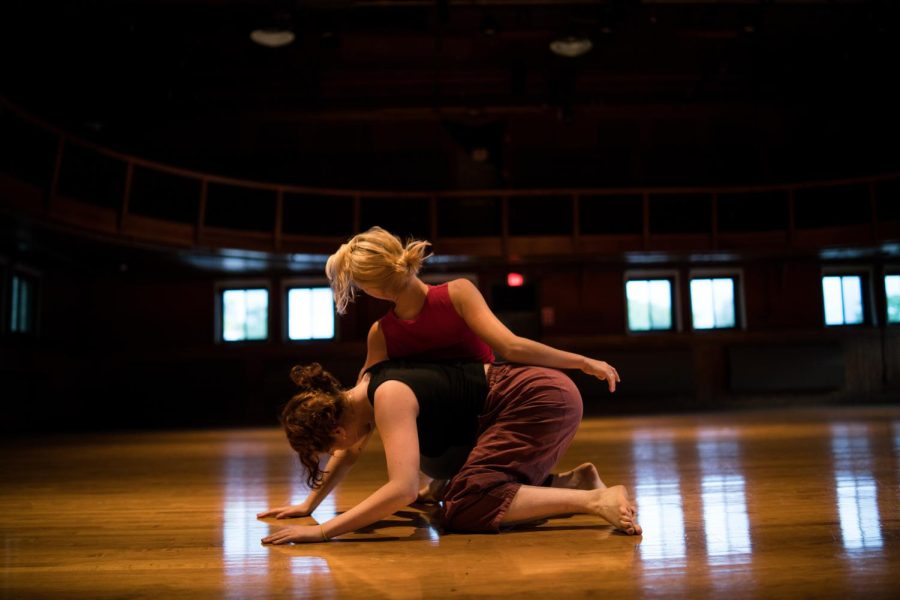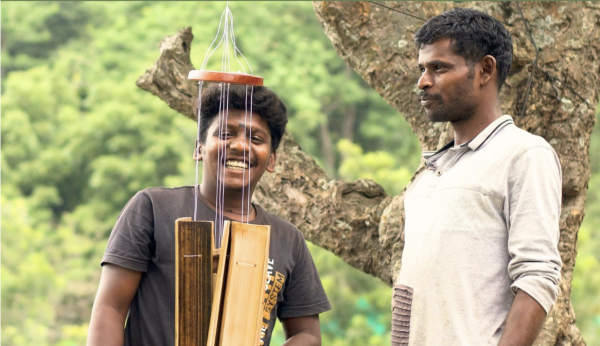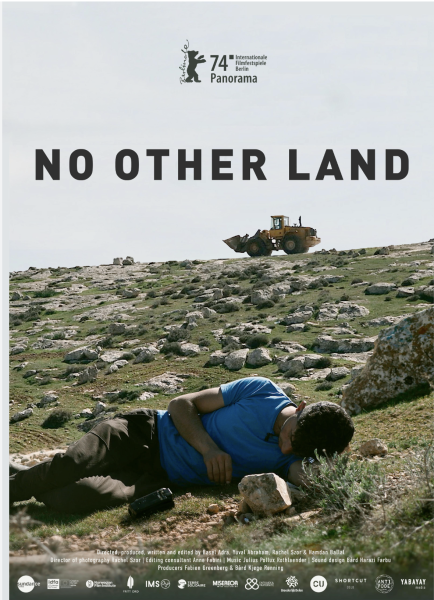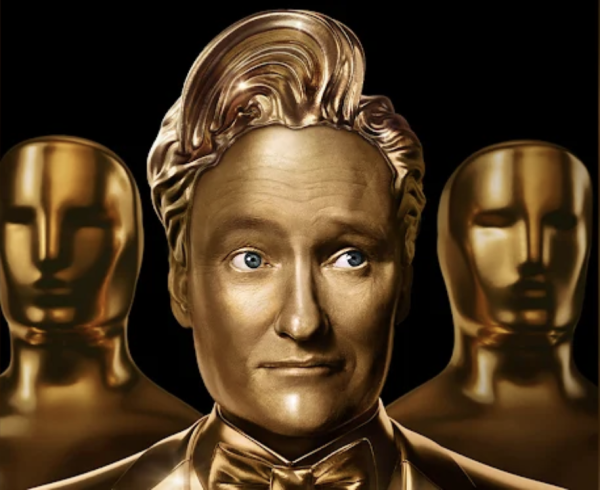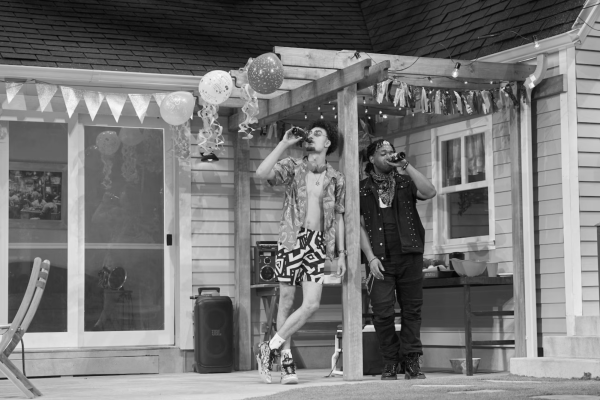Contact Improv Facilitates Deep, Mindful Touch During COVID-19
Photos by Abe Frato, Photo Editor
ExCo instructors Nina DiValentin and Piper Morrison demonstrate contact improv.
This semester, College fourth-years Nina DiValentin and Piper Morrison are facilitating a mixed-level contact improvisation class through Oberlin’s Experimental College. Contact improvisation is a dance form that centers around giving and receiving weight and moving organically and harmoniously with other dancers. In free-flowing contact “jams,” dancers come together, find a point of contact between their bodies, and move in tandem with each other.
Contact improv as it’s known today originated at Oberlin in 1972 with dancer Steve Paxton, who taught the art form to twelve men on campus. Paxton pulled from his experiences with aikido and gymnastics to create a form of dance that was more concerned with bodily awareness and the experience of connecting and interacting with others rather than with performance for an audience.
“I think that it’s important to emphasize that people have probably been doing this with their bodies for much longer than fifty years, but the codified term ‘contact improv’ was created by Steve Paxton at Oberlin,” Morrison said. “It started as kind of like an experiment, with a bunch of guys throwing their bodies at each other. It was initially very inspired by aikido and other martial art forms and modern dance, and it all meshed into this playground of rough housing. And now, it’s expanded into a global phenomenon.”
Morrison and DiValentin are the first students to teach an ExCo course on contact improv since the start of the COVID-19 pandemic. Both are experienced with and passionate about the form.
“Unlike other dance forms, it’s really about the act of doing and the experience of movement in the body, versus preparing something to show,” Morrison said. “That’s not to say it hasn’t been performed — and we do get into that a little bit in Varsity Contact — but that’s not its primary function.”
Morrison was vaguely familiar with CI before committing to Oberlin, and she had her first in-depth instruction with the form when she took the ExCo in fall 2019, then taught by Rebecca Janovic, OC ’18. DiValentin got involved with CI during the fall of 2021 by taking Professor of Dance Ann Cooper Albright’s class. Morrison and DiValentin met — and, over time, became closely bonded — when they both took part in the intensive CI Winter Term project with visiting artist Jurij Konjar.
“To me, finding contact [improv] felt like finding a home within dance,” Morrison said. “It felt like a bridge between more social, freeform dance settings and traditional dance classes. [CI classes] were places where I could experiment with dancing in a space cut out purely for dance, rather than a social space, like a party.”
Morrison and DiValentin noted that this iteration of CI consists of an unexpected majority of newcomers, rather than a balanced mix of levels. Both Morrison and DiValentin expressed that this is both a source of difficulty and a moment of opportunity for them to push themselves as educators.
“Something I would say I’m finding difficult in teaching the ExCo is trying to ingrain this idea that we’re not performing for each other,” Morrison said. “We’re witnessing each other and supporting each other in movement, but the goal of learning different strengthening techniques and exercises is to be able to dance to our fullest ability. It isn’t for the sake of making it look a certain way.”
According to Morrison, the heightened interest in CI among those who’ve never experienced it before is tied to the overlapping social and artistic side of the form.
“I think a lot of people were really curious about what it would be like to engage in close contact in this dance form that’s social, but also artistic,” Morrison explained. “It’s often unfamiliar, and even weird, to be that close to strangers or to new faces and without the connotation that it carries a romantic or sexual connotation.”
The challenges of teaching CI to first-timers is heightened by COVID-related anxieties.
“I think that there’s a general sense of trepidation surrounding getting within people’s personal space bubbles,” Morrison said. “When facilitating a class where we’re directly instructing people to do that, we have to be really cautious and careful to communicate clearly why we’re doing what we’re doing, and we need to be sure to provide alternatives for people who aren’t comfortable or maybe aren’t quite comfortable yet. Since the pandemic, there’s this bubble that everyone has that feels much more nerve-wracking to break than it has in the past. We have to go slowly.”
Although the pandemic has made the already vulnerable experience of dancing in intimate contact with strangers more stressful to navigate, it has also increased the collective desire for meaningful touch. People are eager, perhaps now more than ever, to feel present in their bodies and to feel physically close to others.
“[During the pandemic] it was like my body was screaming to be touched by other people and to have that skin to skin contact,” DiValentin said. “And then, in contact improv, someone is trying to truly feel your body through their body and have your weight and their weight coalesce. It’s a mindful, meaningful kind of touch. To have that kind of touch when I was craving touch was spectacular to me. It was exactly what I needed.”
Brooke Levan, a second-year College student, is one of the newcomers to CI. Thus far, Levan has found her experience in CI to be freeing, especially after COVID.
“We’ve all been avoiding [physical] contact for these past couple of years, so it feels really nice, honestly, even if it requires a shift in my mindset,” Levan said. “It feels like something I’ve been missing. … I think that physical touch is an important form of connection with other people.”
Going forward, Levan wants to integrate her experiences with CI into her daily life.
“After my first class, I felt much more present and aware of my surroundings and my place in space,” she said. “I think that is something that I would definitely like to carry into everyday life if possible, especially considering the crazy busyness of school. I don’t know if I’m there just yet, but I would like to get there.”


